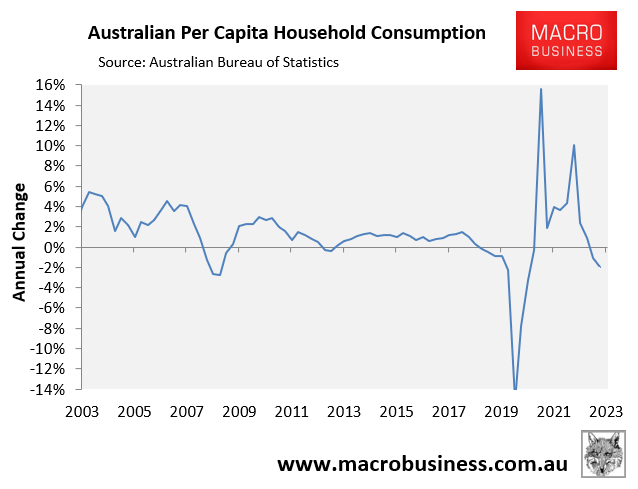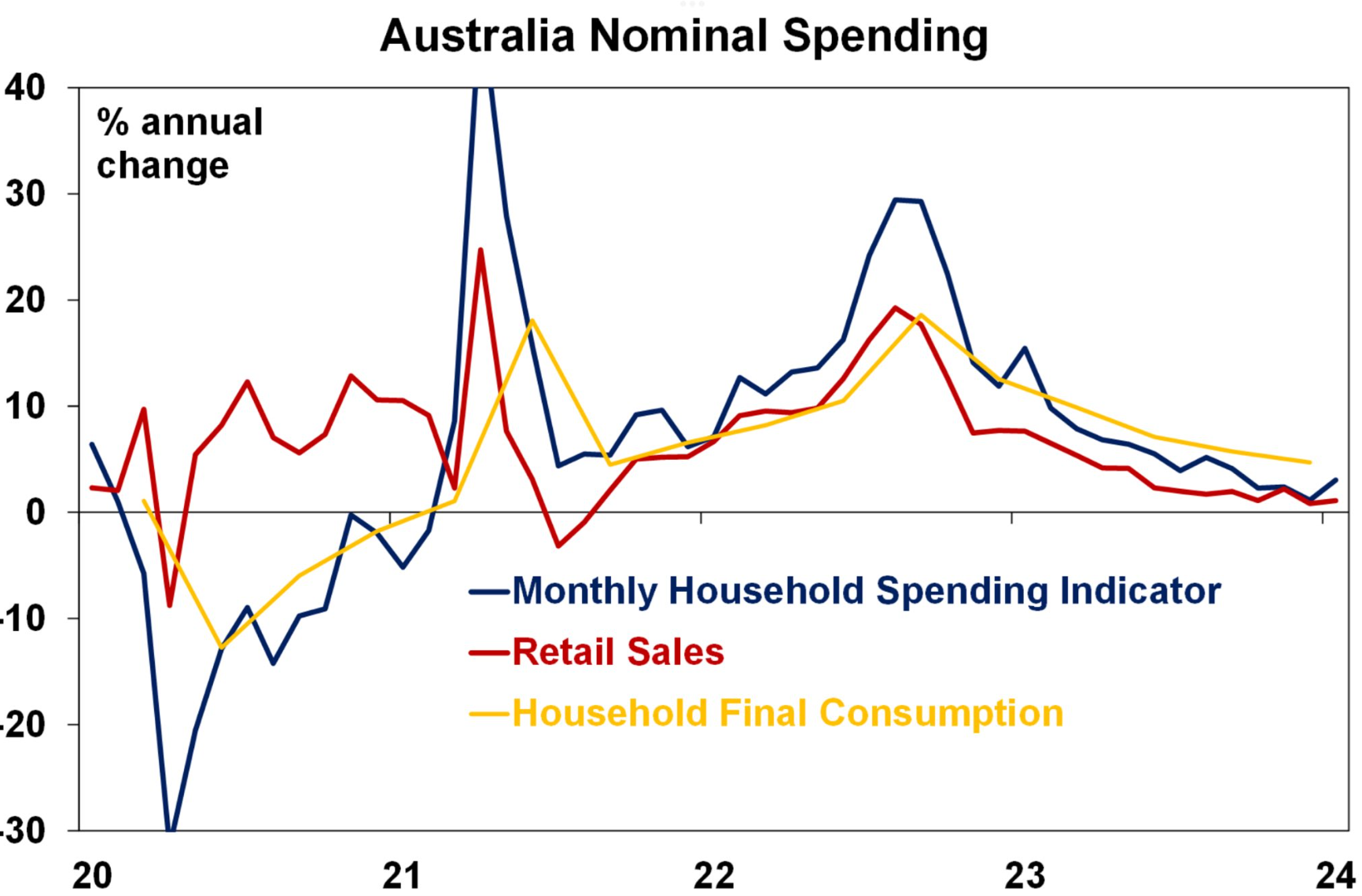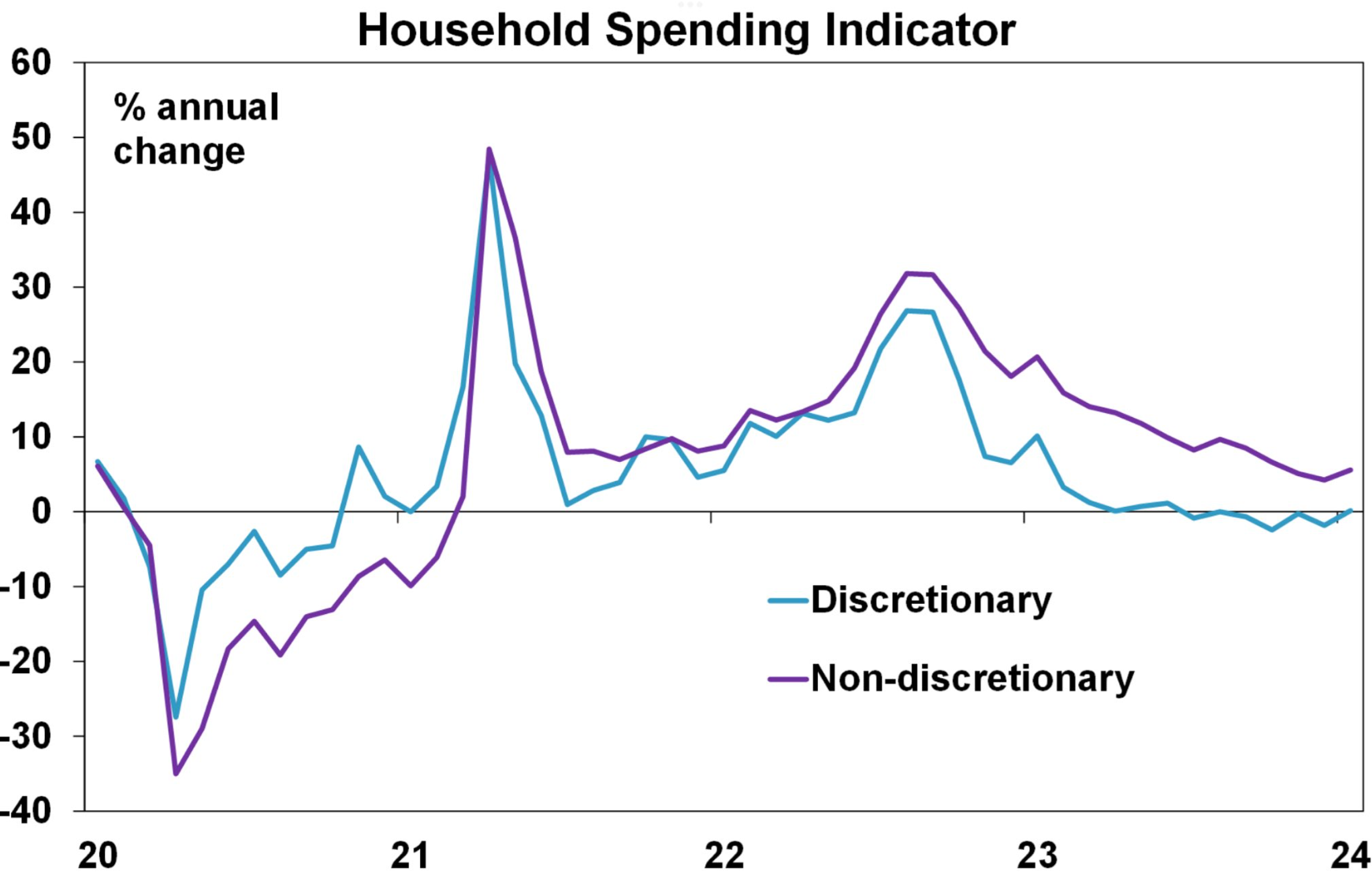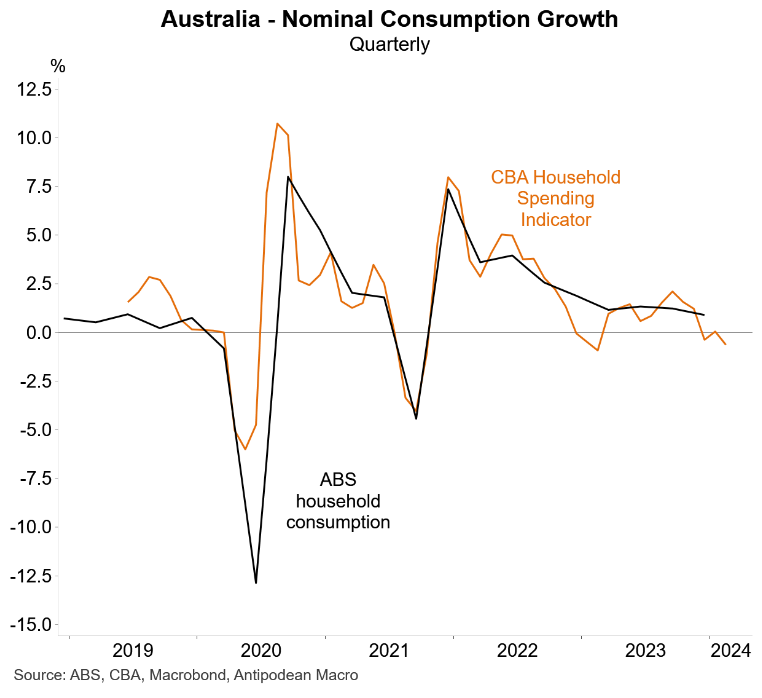Last week’s Q4 national accounts release from the Australian Bureau of Statistics (ABS) showed that real per capita household consumption fell by 2.5% in 2023, which was the weakest result since the 2008 Global Financial Crisis outside of the pandemic:

The ABS’s January Household Spending Indicator also revealed that, in nominal terms, household spending increased by only 3.0% in 2023, which was significantly less than the combined rates of CPI inflation of 4.1% and population growth of about 2.5%.
The next chart from AMP chief economist Shane Oliver plots the Household Spending Indicator against household final consumption (as measured in the Q4 national accounts) and the ABS’ January retail sales:

Source: Shane Oliver (AMP)
The Household Spending Indicator shows that consumers have cut back hard on discretionary spending, as expected during a cost-of-living crisis:

Source: Shane Oliver (AMP)
On Wednesday, CBA released its Household Spending Insights (HSI) index for February, which is based on transactions metadata from around seven million CBA customers.
The HSI declined by 0.3% in February and is now tracking below the November 2023 reading, “pointing to a weakening of household spending when the summer months are taken together”:

The next chart from Justin Fabo at Antipodean Macro plots the CBA HSI against the ABS national accounts measure of household consumption:

As you can see, CBA’s HSI is pointing to further weakness in household consumption as measured in the national accounts.
In its commentary accompanying its HSI release, CBA noted that Australia’s growth slowdown is “being driven by the consumer”, which began “before the November 2023 rate hikes took hold, with variable mortgage repayments only increasing in February 2024”.
“With the annual rate of inflation in February expected to be ~3.5% to 4%, spending is close to flat in real terms and is declining on a real per capita basis”.
“Together with decelerating inflation, soft household spending supports our view that the RBA can start lowering interest rates in September this year”, CBA said.

